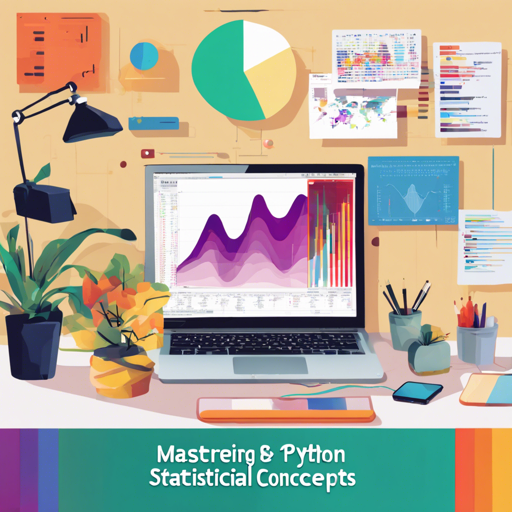Welcome to the world of statistics and machine learning! In this article, we will walk through the key concepts and code implementations based on statistical study notes, emphasizing practical applications in Python.
1. Understanding Key Statistical Concepts
Statistics is the backbone of data science, allowing us to analyze and interpret complex data. Below are some foundational concepts:
- Maximum Likelihood Estimation (MLE): A method to estimate parameters of a statistical model.
- Bayesian Estimation: A statistical procedure that applies Bayes’ theorem.
- Hoeffding’s Inequality: Provides bounds on the sum of random variables.
2. Getting Started with Code
To apply these statistical methods, you’ll need to set up your Python environment and import necessary libraries:
import pandas as pd
import numpy as np
from sklearn import datasets
3. Datasets to Explore
The Iris Dataset serves as a classic example, showcasing how statistical methods can be applied in Python for analysis and predictions.
To load the dataset:
iris = pd.read_csv("https://github.com/kingsunfather/Statistic-study-notes/blob/master/codes/iris.csv")
print(iris.head())
4. Implementing Machine Learning Models
We can implement various machine learning models such as K-Nearest Neighbors (KNN), Decision Trees, and others. Here’s a brief analogy to visualize the implementation:
Think of your data as a vast library of books. Each book represents a record, while the columns represent various attributes. When we want to find a particular genre (classify a new record), we can use KNN—similar to checking which books are most like the one we’re considering. The model looks for the ‘k’ nearest books and classifies based on majority votes.
5. Example Implementations
Here’s how to implement KNN and Decision Trees:
from sklearn.model_selection import train_test_split
from sklearn.neighbors import KNeighborsClassifier
from sklearn.tree import DecisionTreeClassifier
X = iris.drop("species", axis=1)
y = iris["species"]
X_train, X_test, y_train, y_test = train_test_split(X, y, test_size=0.2)
# KNN Model
knn = KNeighborsClassifier(n_neighbors=3)
knn.fit(X_train, y_train)
print("KNN Accuracy:", knn.score(X_test, y_test))
# Decision Tree Model
tree = DecisionTreeClassifier()
tree.fit(X_train, y_train)
print("Decision Tree Accuracy:", tree.score(X_test, y_test))
Troubleshooting Common Issues
If you encounter issues while implementing this code, consider the following troubleshooting ideas:
- Import Errors: Ensure all required libraries are installed using
pip install pandas numpy scikit-learn. - Data Loading Issues: Verify the dataset URL is correct and accessible.
- Model Accuracy Low: Adjust model parameters or try different models for better results.
For more insights, updates, or to collaborate on AI development projects, stay connected with fxis.ai.
Conclusion
Statistics is not just a collection of numbers—it’s a powerful tool that drives decisions in technology and business. By understanding and applying these statistical concepts and coding techniques in Python, you’re setting yourself up for success in the data-driven world.
At fxis.ai, we believe that such advancements are crucial for the future of AI, as they enable more comprehensive and effective solutions. Our team is continually exploring new methodologies to push the envelope in artificial intelligence, ensuring that our clients benefit from the latest technological innovations.

